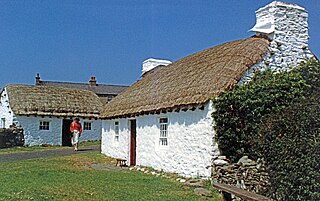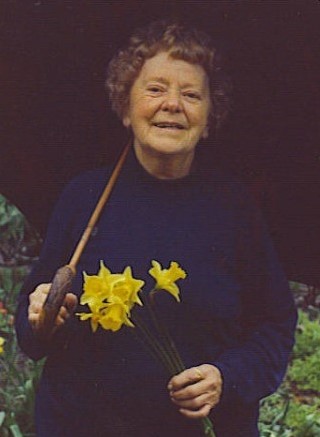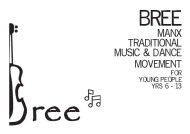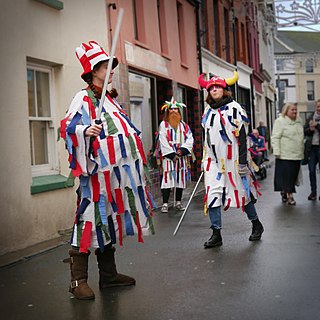
Saint Stephen's Day, also called the Feast of Saint Stephen, is a Christian saint's day to commemorate Saint Stephen, the first Christian martyr or protomartyr, celebrated on 26 December in Western Christianity and 27 December in Eastern Christianity. The Eastern Orthodox churches that adhere to the Julian calendar mark Saint Stephen's Day on 27 December according to that calendar, which places it on 9 January of the Gregorian calendar used in civil contexts. In Western Christian denominations, Saint Stephen's Day marks the second day of Christmastide.

The music of the Isle of Man reflects Celtic, Norse and other influences, including those from its neighbours, Scotland, Ireland, England and Wales. The Isle of Man is a small island nation in the Irish Sea, between Great Britain and Ireland.

Yn Chruinnaght is a cultural festival in the Isle of Man which celebrates Manx music, Manx language and culture, and links with other Celtic cultures.

Wren Day, or Hunt the Wren Day, is an Irish and Manx custom on 26 December, Saint Stephen's Day. Traditionally, men and boys hunted a wren and placed it on top of a staff decorated with holly, ivy and ribbons, or displayed it in a decorated box on top of a pole. This was paraded around the neighbourhood by a group of 'Wrenboys'—typically dressed in straw masks, greenery and colourful motley clothing—who sang songs and played music in exchange for donations. On the Isle of Man, the people afterwards held a funeral for the wren and danced around the wren pole. Wren Day has been undergoing revival since the late 20th century, although the wren is no longer hunted and a stuffed wren is used instead. There were similar New Year traditions in parts of Britain and France until the nineteenth century. It is speculated that the tradition derives from ancient Celtic paganism.

The culture of the Isle of Man is influenced by its Celtic and, to a lesser extent, its Norse origins, though its close proximity to the United Kingdom, popularity as a UK tourist destination, and recent mass immigration by British migrant workers has meant that British influence has been dominant since the Revestment period. Recent revival campaigns have attempted to preserve the surviving vestiges of Manx culture after a long period of Anglicisation, and significant interest in the Manx language, history and musical tradition has been the result.

Cregneash or Cregneish is a small village and tourist destination in the extreme south-west of the Isle of Man, about 1 mi (2 km) from Port Erin. Most of the village is now part of a living museum run by Manx National Heritage. There are also a number of private homes in the village, but their external appearance is controlled to maintain an older look. The village was also home to prominent Manx language speakers, Edward Faragher and Ned Maddrell.

Hop-tu-Naa is a Celtic festival celebrated in the Isle of Man on 31 October. It is the celebration of the traditional Gaelic festival of Samhain, the start of winter. It is thought to be the oldest unbroken tradition in the Isle of Man.
"The Cutty Wren" and its variants such as "The Hunting of the Wren" are traditional English folk songs. The origins and meaning of the song are disputed. It is number 236 in the Roud Folk Song Index.
John Joseph Kneen was a Manx linguist and scholar renowned for his seminal works on Manx grammar and on the place names and personal names of the Isle of Man. He is also a significant Manx dialect playwright and translator of Manx poetry. He is commonly best known for his translation of the Manx National Anthem into Manx.

Mona Douglas was a Manx cultural activist, folklorist, poet, novelist and journalist. She is recognised as the main driving force behind the modern revival of Manx culture and is acknowledged as the most influential Manx poet of the 20th century, but she is best known for her often controversial work to preserve and revive traditional Manx folk music and dance. She was involved in a great number of initiatives to revive interest and activity in Manx culture, including societies, classes, publications and youth groups. The most notable and successful of these was Yn Chruinnaght.
Aeglagh Vannin was a youth group in the Isle of Man whose purpose was the engagement with and revitalisation of Manx language, history and culture. It was established by Mona Douglas in 1931, went through a number of mutations, and faded out in the 1970s. It is best remembered for its central role in the revival of Manx folk dancing.

Colin Jerry was a Manx cultural activist best known for his contributions to Manx music through his books, Kiaull yn Theay, published in two volumes. He was awarded the Reih Bleeaney Vanannan in 1991 for his contributions to Manx culture which were 'extensive and staggering.'
Rinkaghyn Vannin is an important book of 28 Manx dances, mostly collected by Mona Douglas, which was published in 1983 by Sleih gyn Thie.
Hop-tu-naa is a traditional Manx dance connected to the hop-tu-naa festivities around 31 October in the Isle of Man. It is a simple processional dance for any number of two pairs of dancers. The dance shares its name with the festivities and the music to which the dance is connected.
The Flitter Dance is a traditional dance from the Isle of Man associated with Good Friday. It was collected by Mona Douglas in the 1940s or 50s and is popular among younger Manx dancers today.
Edmund Evans Greaves Goodwin was a Manx language scholar, linguist, and teacher. He is best known for his work First Lessons in Manx that he wrote to accompany the classes he taught in Peel.
Doug Fargher (1926–1987) also known as Doolish y Karagher or Yn Breagagh, was a Manx language activist, author, and radio personality who was involved with the revival of the Manx language on the Isle of Man in the 20th century. He is best known for his English-Manx Dictionary (1979), the first modern dictionary for the Manx language. Fargher was involved in the promotion of Manx language, culture and nationalist politics throughout his life.

Bree is a youth educational movement organised by Culture Vannin on the Isle of Man that gives children between the ages 10 and 18 the opportunity to learn traditional Manx music, dance, and culture. Bree is a Manx word that means 'vitality or 'energy'. The movement organises the annual workshop weekend every autumn and also runs monthly sessions through the year.

Shennaghys Jiu(English: Tradition Today) is a four-day youth music and performing arts festival on the Isle of Man. The festival's aim is to give young performers of traditional Manx music and dance the opportunity to come together in a non-competitive environment, and share culture with the other Celtic nations.

The White Boys is the traditional mummers' play of the Isle of Man.















